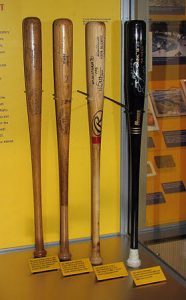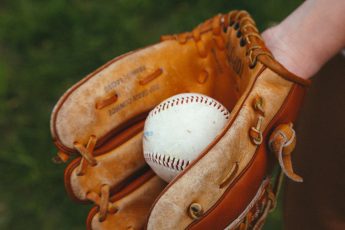In baseball, you must do a lot of practice as it is technical and requires a lot of time to learn, so you continuously practice what makes a solid baseball player.
But the main consideration is, what are fungo bats, and why should you use them. Well, you might have heard of fungo bats but do not know what exactly it was, or you already know what it is, but you are trying to learn more about them.
Well, I am going to explain what exactly they are and why they should be used.
For more information on baseball, check out; Baseball
What Is Fungo?
Before we start explaining what fungo bats are, we should first clarify the term fungo or fungoes.
In simple terms, a fungo is a ball thrown up in the air by a batter and then struck down as it falls during practice sessions. If you are a coach, you might know what I am talking about, but for those who aren’t familiar with the word and just hearing it for the first time, here is everything you need to know about fungo bats and why they should be used.
What Are Fungo Bats?
In simple terms, if fungoes are balls tossed in the air and then struck when it comes down, they are baseball bats used to hit fungoes. But to explain in more detail, fungo bats are long, lightweight baseball bats used by coaches during practices to help players hit grounders and pop fly with better consistency and less fatigue.
To become the best in baseball, consistent practice is needed, and fungo bats for both outfield and infield practice. They also help significantly with accuracy and control so both parents and coaches can put the ball wherever they want when they want.
Who Made the First-Ever Fungo Bat?
The word fungo or fungoes bat has been in reference since the early 1800s, but no one knows precisely when it was created or where it originated. Both baseball fans and historians agree that the mystery of who made the first fungo bats may never be known.
The fungo bat creator might be a mystery, but the creation itself is not and has been of great help to both coaches and players.
Origin of Fungo Bats
The word fungo origins are unknown and could be argued upon as they are many possibilities as to where that word originated from. It was concluded by many that it was gotten from the Scottish word fung, which means toss, fling, or pitch. This makes sense because fungo bats are made to do exactly that.
In an alternative origin, it was said that fungo originated in 1937, when a writer for the American Speech, David Shulman, said:
“I guess that the word, which is baseball slang, may be explained through the elements of a compound word, fun and go.”
Another theory believed that the word fungo originated from an old game with similarities to baseball where players chanted as they played, “One go, two goes, fun goes.”
When Were Fungo Bats First Used in Baseball?
Since the beginning of baseball, as some of you may know, Fungo bats have been said to have been invented by Abner Doubleday in Cooperstown, New York, during the summer of 1839.
In those days, fungo bats were almost seen as cheating as they were easier to swing and gave off a ton of pop. A famous sportswriter stated Henry Chadwick from a book in 1897 named “The Technical Terms of Baseball,” “The weakest batting is seen when the batsman uses a fungo bat.”
Until baseball rules and regulations came into place, fungo was now used only by coaches and parents.
Check out all you need to know about Youth Leagues HERE
Why Should You Use Fungo Bats?
There is a lot of benefit to using a fungo bat. For coaches or parents looking to improve your child’s defensive skill set, then you surely need a fungo bat.
A wooden baseball bat for an average adult weighs about 27-31 ounces. Then after a couple of rounds of pop-fly, it will feel like you just went through a full-on workout, but with fungo bats, you would be able to hit ground balls and even pop fly through the day without feeling exhausted.
A fungo bat barrel is usually 2 1/4 inches, which significantly increases your control over the bat through the hitting zone. While fungo bats have a thin diameter, they are also longer than a normal wood baseball bat.
The large hitting surface and small barrel combined to give both coaches and parents fast swing speed and good accuracy.
How Much Do Fungo Bats Weigh?
The bats are very light when it comes to is weight. Legal baseball bats usually weigh 29 ounces upwards.
Bake McBride when he was playing for the Phillies used a light 27-ounce bat that follow the bat construction regulation.
What is the heaviest bat ever used?
The heaviest bat that has been used in rules weighed 50 ounces, while an average fungo bat weighs less than 20 ounces.
How Are Fungo Bats Made?
In simple terms, fungo bats are long, lightweight baseball bats used for baseball fielding practices. Their length is about 34 to 37 inches and weighs about 17 to 24 ounces.
These bats will usually feature a 2 1/4 inch barrel diameter for better control during a swing. They are longer than and weigh a lot less than average baseball bats.
They are mostly made of ash wood, while others are made from maple and bamboo wood, composite wood, and aluminum alloy. Almost every type of fungo bats is at a price of under, with few surpassing that price.
Conclusion
Here you have everything you need to know about fungo bats and why coaches and parents should use them for practices.
For more information on baseball bats, check out;
What is a bat compression tester? How are they helpful‘
What is the average baseball bat weight?



